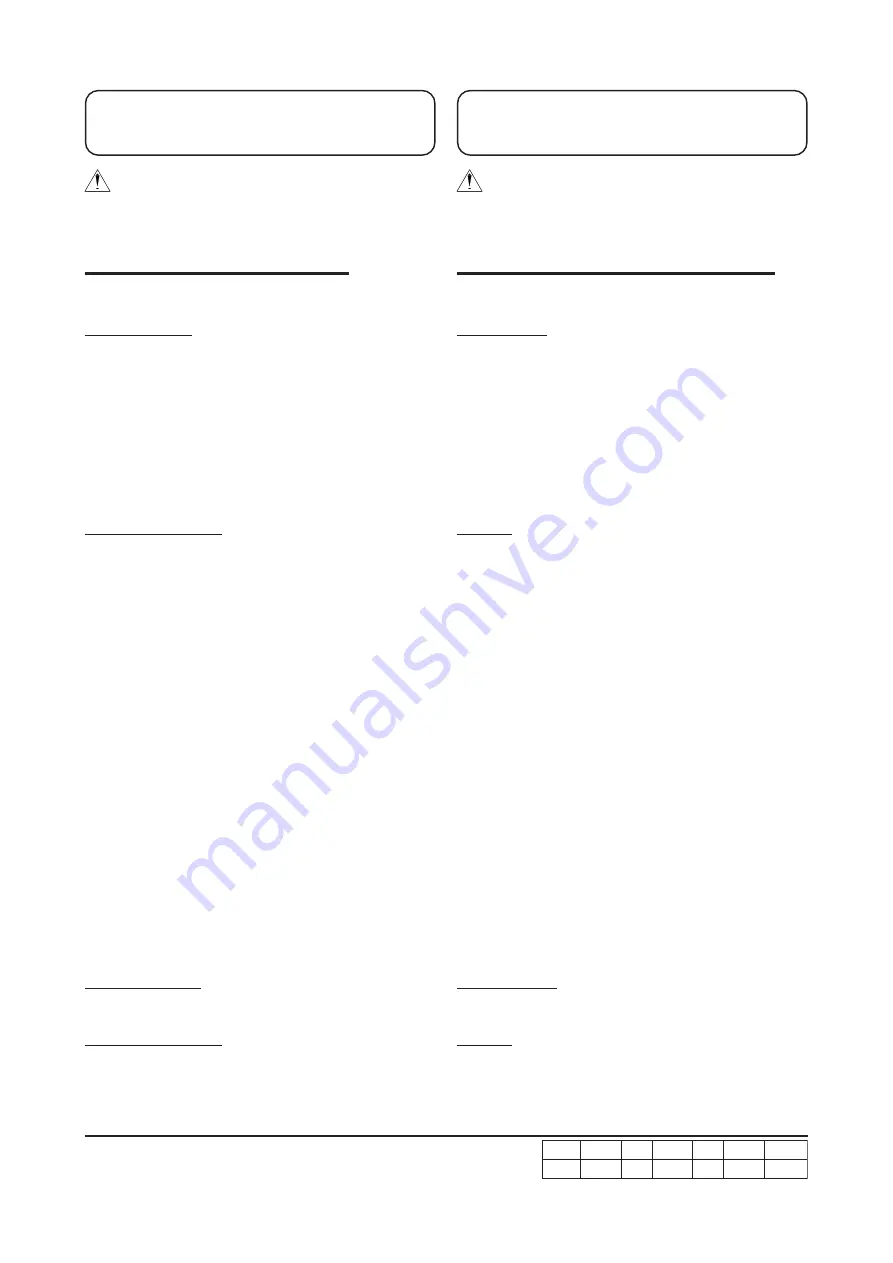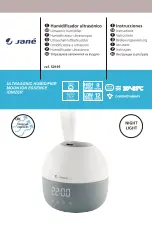
- 15 -
2
9
4
0
D
1
0
.
2
0
.
6
1
K
S
1
0
.
2
0
.
6
1
G
J
e
m
a
N
-
D
t
ll
e
t
s
r
e
e
m
a
N
.
r
p
e
g
e
m
a
N
.
f
t
z
t
e
s
r
e
.
d
t
z
t
e
s
r
e
9. Störungen,
Störungsbeseitigung
Hinweis:
Die in Klammern näher bezeichneten Bauteile (z.B.
A103) beziehen sich auf das R&I-Schema.
Beachten Sie dazu auch Kapitel 13. "Maßzeichnung".
9.1 Störungen ohne Störmeldung
Wasser im Druckluftsystem
Mögliche Ursache:
a) Kondensatrückstände im Druckluftnetz, die sich bereits vor der
Inbetriebnahme gebildet hatten.
b) Umgehungsleitung Bypass geöffnet.
c) Druckluftein- und -austritt vertauscht.
d) Kondensat wird nicht abgeschieden.
e) Verschmutzung der Abscheiderpatrone (entfällt bei Type
HPRD0.25).
Störungsbeseitigung:
a) Druckluftnetz mit trockener Luft ausblasen, bis keine Feuchtig-
keit mehr auskondensiert. Entnahmestelle möglichst am ent-
ferntesten Punkt öffnen.
b) Bypass überprüfen und in die richtige Stellung bringen (Bypass
schließen).
c) Überprüfen der Druckluftanschlüsse anhand der
Maßzeichnung.
d) Kondensatableiter überprüfen.
- Taste „MANUAL OVERRIDE“ an der elektronischen
Zeitsteuerung (H115) betätigen.
- Sichtkontrolle, ob Kondensat abgeschieden wird.
e) Austausch der Abscheiderpatrone (A103) (entfällt bei Type
HPRD0.25).
- Anlage drucklos machen.
- Isolierung am Abscheidebehälter entfernen.
- Überwurfring lösen.
- Abscheidebehälter entfernen.
- Abscheiderpatrone (A103) wechseln.
- Zusammenbau erfolgt in umgekehrter Reihenfolge.
- Anlage wieder mit Druck beaufschlagen.
Hoher Druckverlust über den
Kälte-Drucklufttrockner
Mögliche Ursache:
a) Anlage luftseitig eingefroren.
Störungsbeseitigung:
a) Schalter „0-I“ in Position „0“ (Aus) schalten bis das Luftsystem
abgetaut ist. Erfolgt nach erneutem Inbetriebsetzen ein wie-
derholtes Einfrieren, Justierung des Heißgasreglers über-
prüfen (durch authorisiertes Fachpersonal) und ggf. nach-
justieren.
9. Malfunctions,
troubleshooting
Remark!
The component specified in parentheses (e.g. A103)
refer to the R&I schematic diagram.
Please see also section 13. „Dimensional drawing“.
9.1 Malfunctions without fault messages
Water in the compressed-air system
Possible cause:
a) Condensate residues which formed prior to starting up the dryer
are in the compressed-air system.
b) Bypass open.
c) Compressed-air inlet and outlet connections reversed.
d) Condensate not separated.
e) Separator cartridge soiled (not applicable for type
HPRD0.25).
Remedy:
a) Blow out compressed-air system with dry air until no more
moisture is condensed out. Open collection point at most remote
position, if possible
b) Check the bypass and move to the correct position (close bypass).
c) Check the compressed-air connections by reference to the
dimensional drawing (see section 13).
d) Check the condensate drain.
- Depress the „MANUAL OVERRIDE“ button from the electrical
timing device (H115).
- Visual check to assess whether condensate is discharged.
e) Replace the separator cartridge (A103) (not applicable for
type HPRD0.25).
- Depressurize the system.
- Remove insulation on separator tank.
- Remove coupling ring.
- Remove separator tank.
- Replace separator cartridge (A103).
- Reassembly is carried out via the reverse procedure.
- Repressurize the system.
High pressure loss through
the refrigerated compressed-air dryer
Possible cause:
a) Air system frozen.
Remedy:
a) Set switch „0-I“ to position „0“ (OFF) until the air system is de-
frosted. If the system freeze again after restarting, have the
setting of the heating gas controller (P219) checked by
authorised specialist personnel and adjust if necessary.
















































